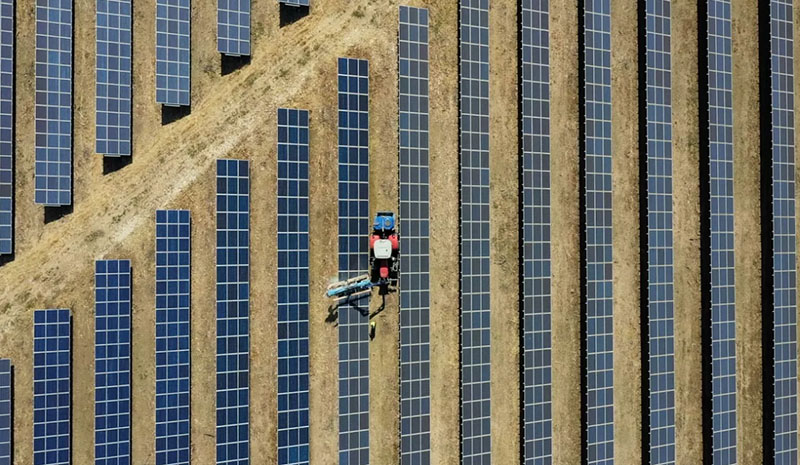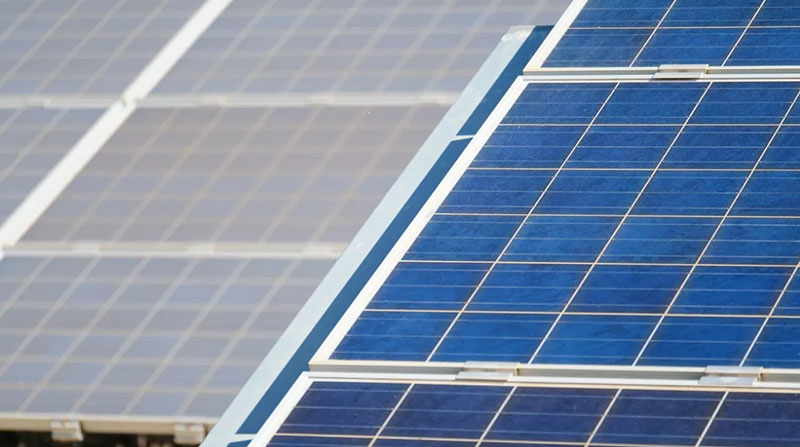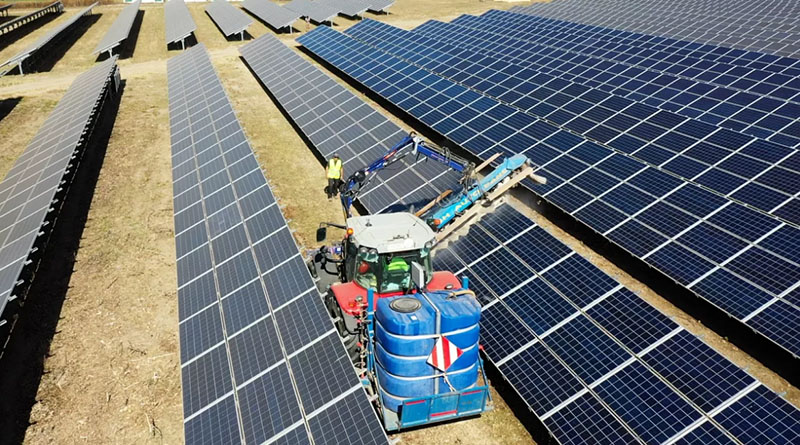- English
- Español
- Português
- русский
- Français
- 日本語
- Deutsch
- tiếng Việt
- Italiano
- Nederlands
- ภาษาไทย
- Polski
- 한국어
- Svenska
- magyar
- Malay
- বাংলা ভাষার
- Dansk
- Suomi
- हिन्दी
- Pilipino
- Türkçe
- Gaeilge
- العربية
- Indonesia
- Norsk
- تمل
- český
- ελληνικά
- український
- Javanese
- فارسی
- தமிழ்
- తెలుగు
- नेपाली
- Burmese
- български
- ລາວ
- Latine
- Қазақша
- Euskal
- Azərbaycan
- Slovenský jazyk
- Македонски
- Lietuvos
- Eesti Keel
- Română
- Slovenski
- मराठी
- Srpski језик
How is Saharan dust impacting solar power?
Massive solar energy losses due to Saharan dust
Saharan dust is best known in Europe for tinting the sky orange, reducing air quality and leaving a fine layer of dust across rooftops and cars. Yet it also responsible for a growing issue, the so-called 'soiling' of solar cells. Egret News is paying much concern of this, and let`s see the investigation by the professionals.
Saharan dust is best known in Europe for tinting the sky orange, reducing air quality and leaving a fine layer of dust across rooftops and cars. Yet it also responsible for a growing issue, the so-called 'soiling' of solar cells.
At the University of Jaén in Andalucía we met Dr Eduardo F Fernández and Professor Florencia Almonacid, who were among the authors of a recent paper that found that a heavy soiling event in March 2022 reduced solar energy production capacity by up to 80 percent.
Dr Fernández told Egret news: "It looked like the environment of Mars, because everything turned all red."
March 2022 was an extreme event, but even small amounts of dust can reduce the sunlight reaching solar cells by 15%, and with the rapid growth of solar energy in Europe, losses from soiling could come to represent billions of euros annually.
So, the research team at Jaén are using their optical laboratories to find solutions. Some scientists focus on developing dust-resistant coatings, while others investigate how dust behaves according to warmer or colder, drier or wetter weather conditions.
There are many variables to consider. For example, dust grains may be different sizes or different colours, and these could impact how solar installations perform.
Even design elements make a difference, such as whether a panel is frameless or has a rigid lip around its border.
Professor Almonacid says Saharan dust is especially tricky: "The particles are very fine from the Saharan dust. And it is particularly difficult to clean".

The cost-benefit conundrum of solar panel cleaning
Renewable energy company Sonnedix faces the soiling challenge every day, keeping a watch over the output from each of its solar sites and carefully calculating when it's commercially viable to clean its PV panels. Cleaning is costly - around 400-500 euros per megawatt - so there are trade-offs to be made depending on how the plant's electricity is priced.
The company's Chief Operating Officer Juan Fernandez tells Euronews: "When you're generating and every single kilowatt hour that you generate is important for the revenue of the plant, these big dust events do have an impact."
He now works with weather forecasters to help plan cleaning sessions according to dust events and type of rainfall, as light drizzle can make panels dirtier, and heavy downpours can wash them for free.
"A severe Saharan dust event could actually bring a significant drop to the production within the grid, and that, for the grid operator, could become an issue," he explains.
"So anticipation, forecasting and being able to manage this proactively is really the name of the game," he says.


Are there more Saharan dust events because of climate change?
The recent rise in Saharan dust events could be part of normal climatic variation, or it could be something else.
A spokesperson for the Copernicus Atmosphere Monitoring Service told Egret news: "While it is not unusual for Saharan dust plumes to reach Europe, there has been an increase in the intensity and frequency of such episodes in recent years, which could be potentially attributed to changes in atmospheric circulation patterns".
There is some speculation that those changes in atmospheric circulation are linked to climate change.
"Science is always cautious about drawing conclusions, as it should be, right?" says dust expert Dr Eduardo Fernández. "But what we are seeing is that there are more and more extreme events - not just soiling, but also rainfall and wind events.
"We're seeing more and more Saharan events, more and more penetrating into northern Europe, and the suspicion is that it is due to global warming," he concludes.




